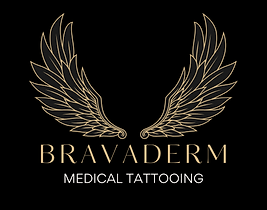Fading the Past: How Inkless Tattooing Can Improve Acne Scars
- Dayle Lauren
- Mar 25
- 2 min read
Updated: Apr 11

Acne is often seen as a temporary skin condition—but for many, it leaves behind something more lasting: scars that linger long after breakouts have healed. These marks can impact self-confidence, alter texture, and create long-term frustration when traditional skincare doesn't quite deliver.
At Bravaderm, I understand the emotional weight acne scars can carry. That’s why I offer a regenerative solution that doesn’t rely on pigment or cover-up: inkless tattooing, a clinical-grade technique designed to improve skin texture, fade scars, and stimulate your skin’s natural healing response—from the inside out.
What Is Inkless Tattooing for Acne Scars?
Unlike traditional tattooing or camouflage techniques that implant color, inkless tattooing uses a fine tattoo needle to create controlled micro-injuries in the skin. These microchannels are then infused with a specialized healing serum—rich in vitamins, peptides, hyaluronic acid, and collagen-boosting agents.
The process kickstarts your skin’s natural wound-healing cascade, prompting increased collagen and elastin production directly within the acne-scarred tissue. Over a series of treatments, this helps to:
Smooth pitted or uneven areas
Soften raised scars
Reduce redness or inflammation
Improve overall tone and elasticity
Why Choose Inkless Over Other Scar Treatments?
Many clients seek paramedical services after trying topical creams, chemical peels, micro-needling, or laser therapy—with mixed results. Inkless tattooing bridges the gap between gentle and effective: it’s deeper and more targeted than micro-needling, but less invasive and risky than ablative lasers.
Key advantages include:
No pigment is used, so there’s no risk of color mismatch
Suitable for all skin tones, including melanin-rich skin
Minimal downtime and low risk of hyperpigmentation
Gradual, natural-looking improvements in skin texture
Safe to use in combination with other modalities like red light therapy or LED pre-treatment
This makes it an ideal treatment for atrophic acne scars—such as ice-pick, boxcar, or rolling scars—especially those that have plateaued with other treatments.
How Many Sessions Are Needed?
Every skin journey is unique, but most clients see visible improvement in 1–3 sessions, spaced 4–6 weeks apart. Deeper or older acne scarring may benefit from a series of up to 4–6 sessions for optimal resurfacing.
At your initial consultation, I’ll assess your skin’s needs, scar depth, and healing capacity, and create a customized treatment plan just for you.
What Does It Feel Like?
Inkless tattooing is well tolerated, especially since we use a topical numbing agent to reduce discomfort. Most clients describe it as a light prickling or vibrating sensation—far less intense than traditional tattoos or ablative treatments.
After the session, mild redness or tenderness is expected, similar to a light sunburn. Downtime is minimal, and you’ll be provided with specific aftercare instructions to promote optimal healing.
Empowering Skin, Naturally
My approach is more than skin-deep. I treat acne scars with the care, science, and artistry they deserve—honoring your skin’s ability to renew itself, while offering the professional support to get you there.
If you’ve been searching for a scar treatment that’s gentle, effective, and rooted in natural skin regeneration, inkless tattooing may be your next step.
Book a Consultation
I’d be honored to support your scar-healing journey. Book your free consultation and discover if inkless tattooing is right for your skin.
Your past doesn’t define your reflection. Let’s begin your transformation—one healing layer at a time.





Comments